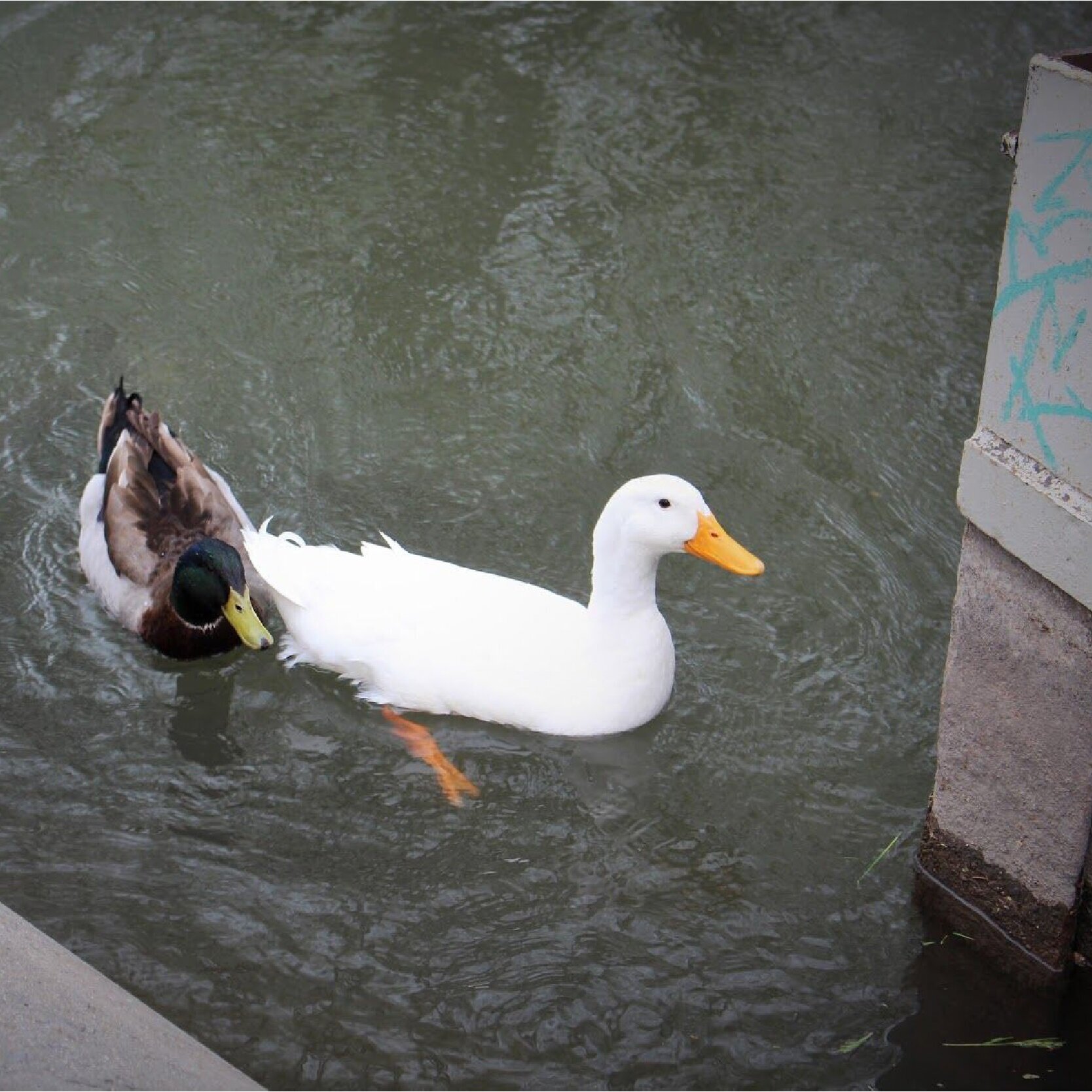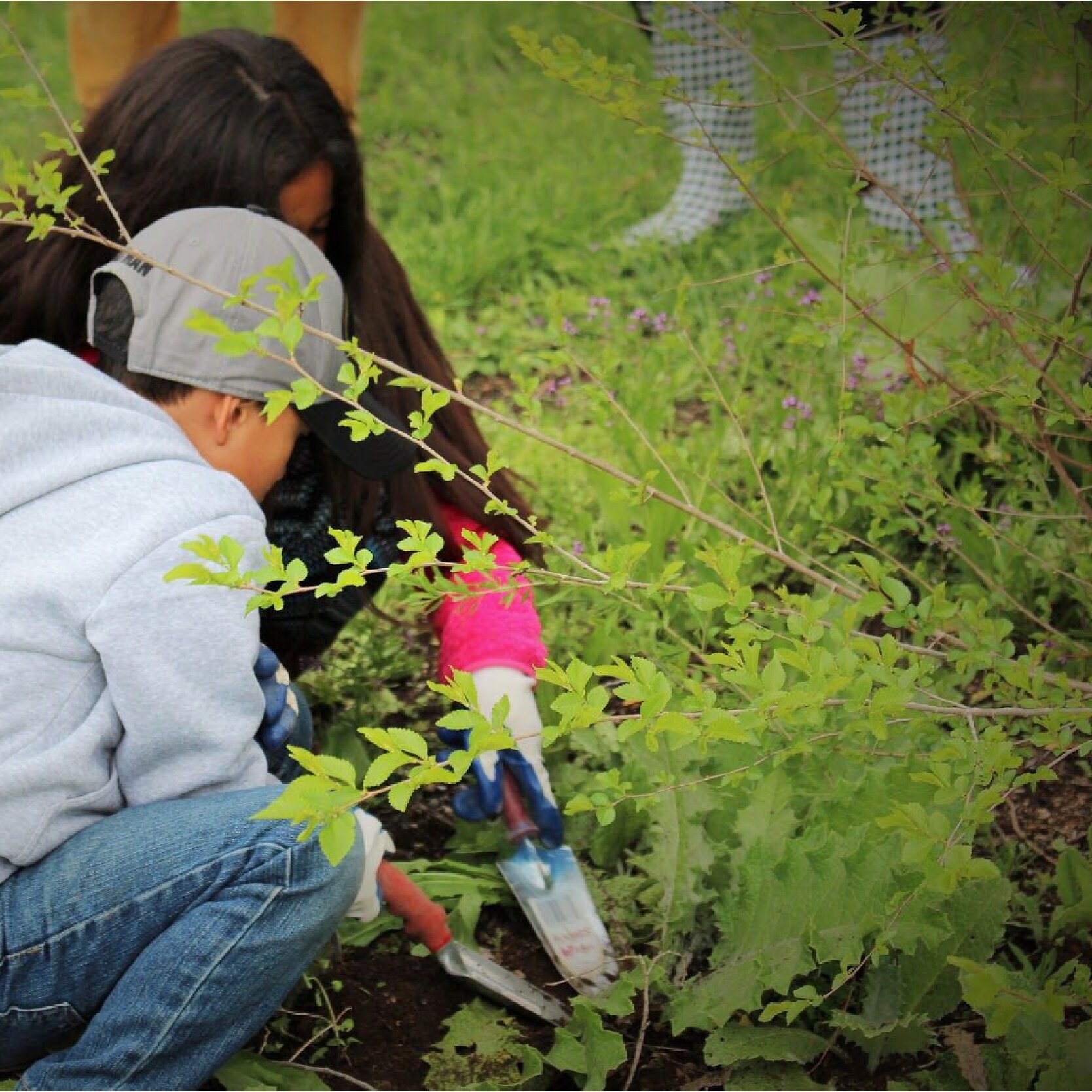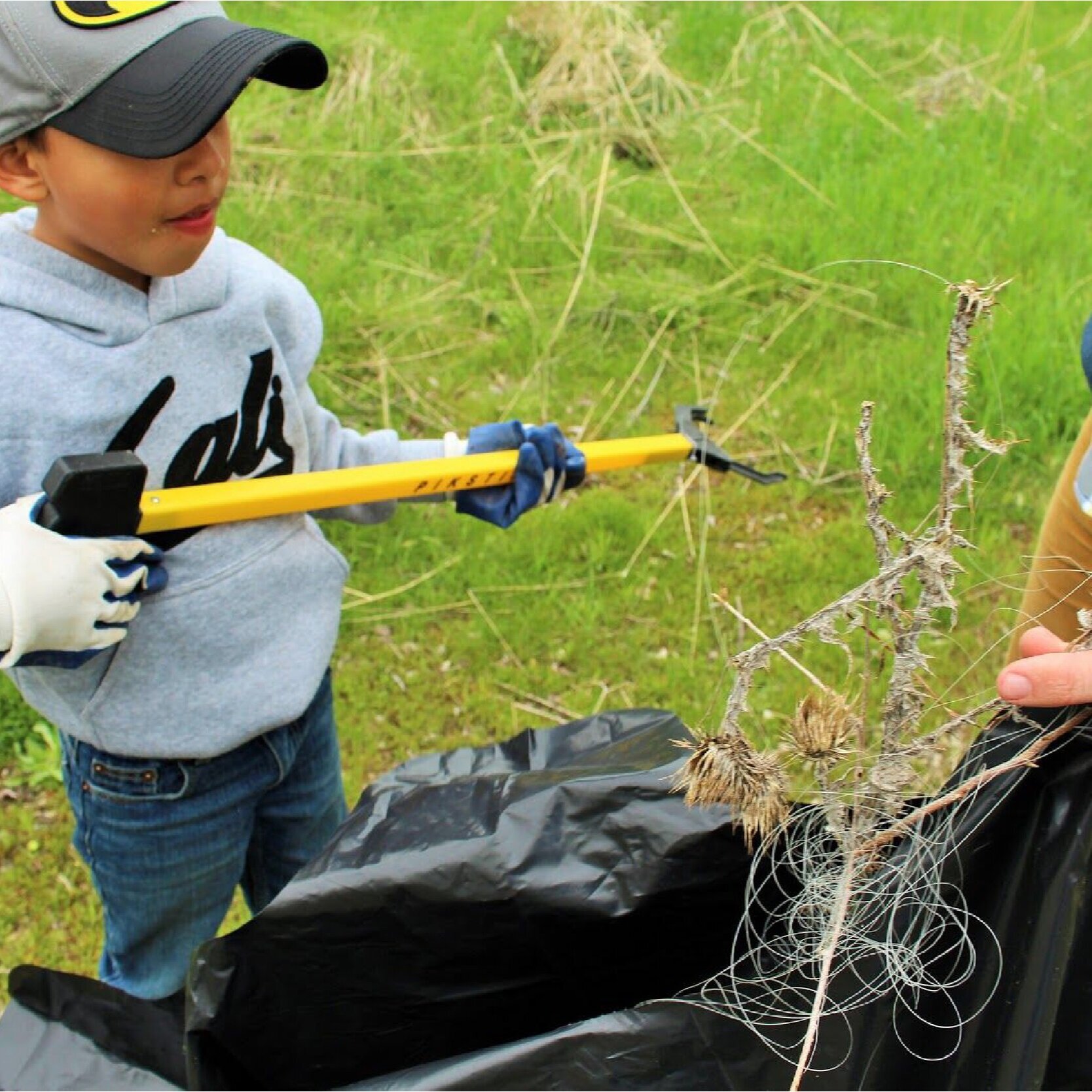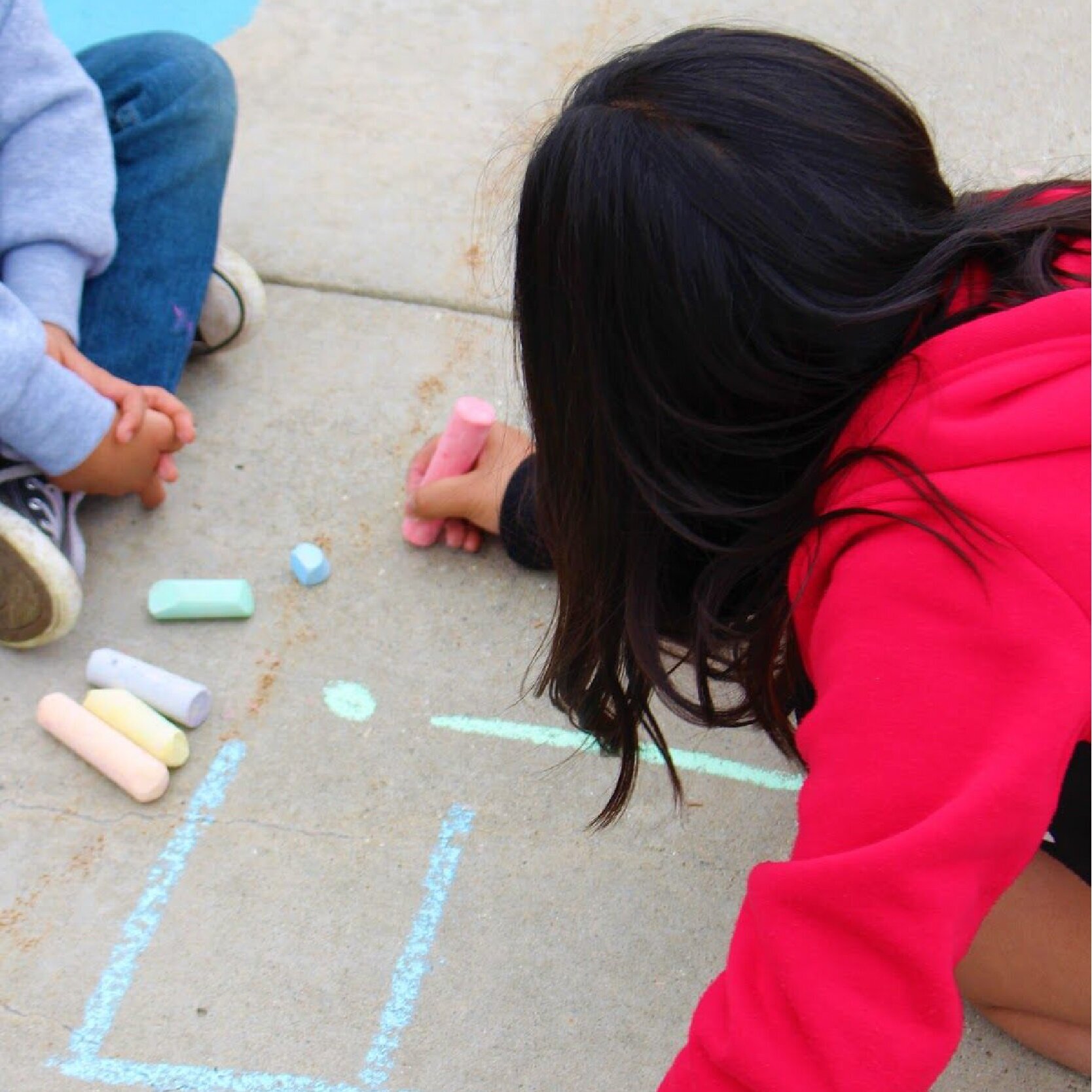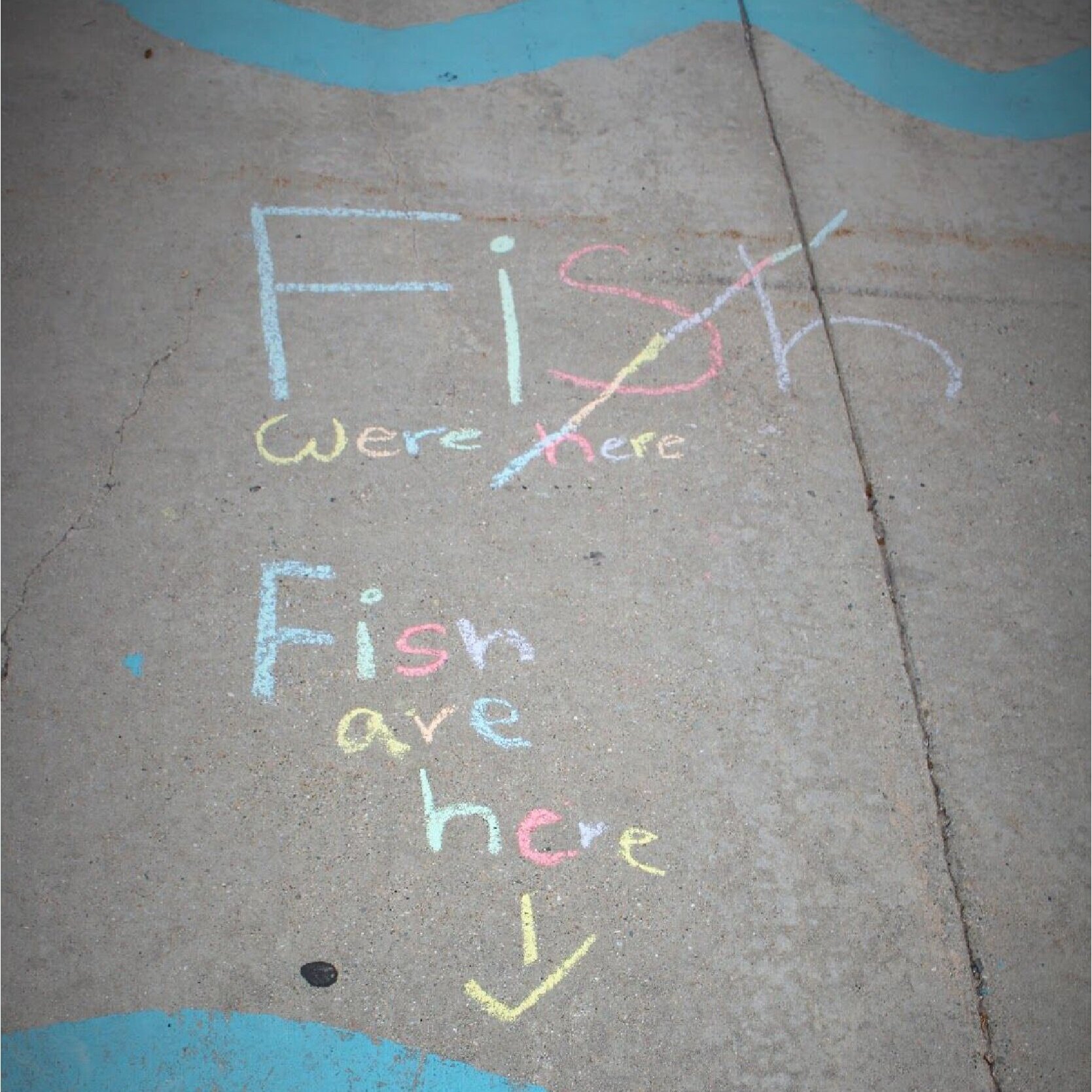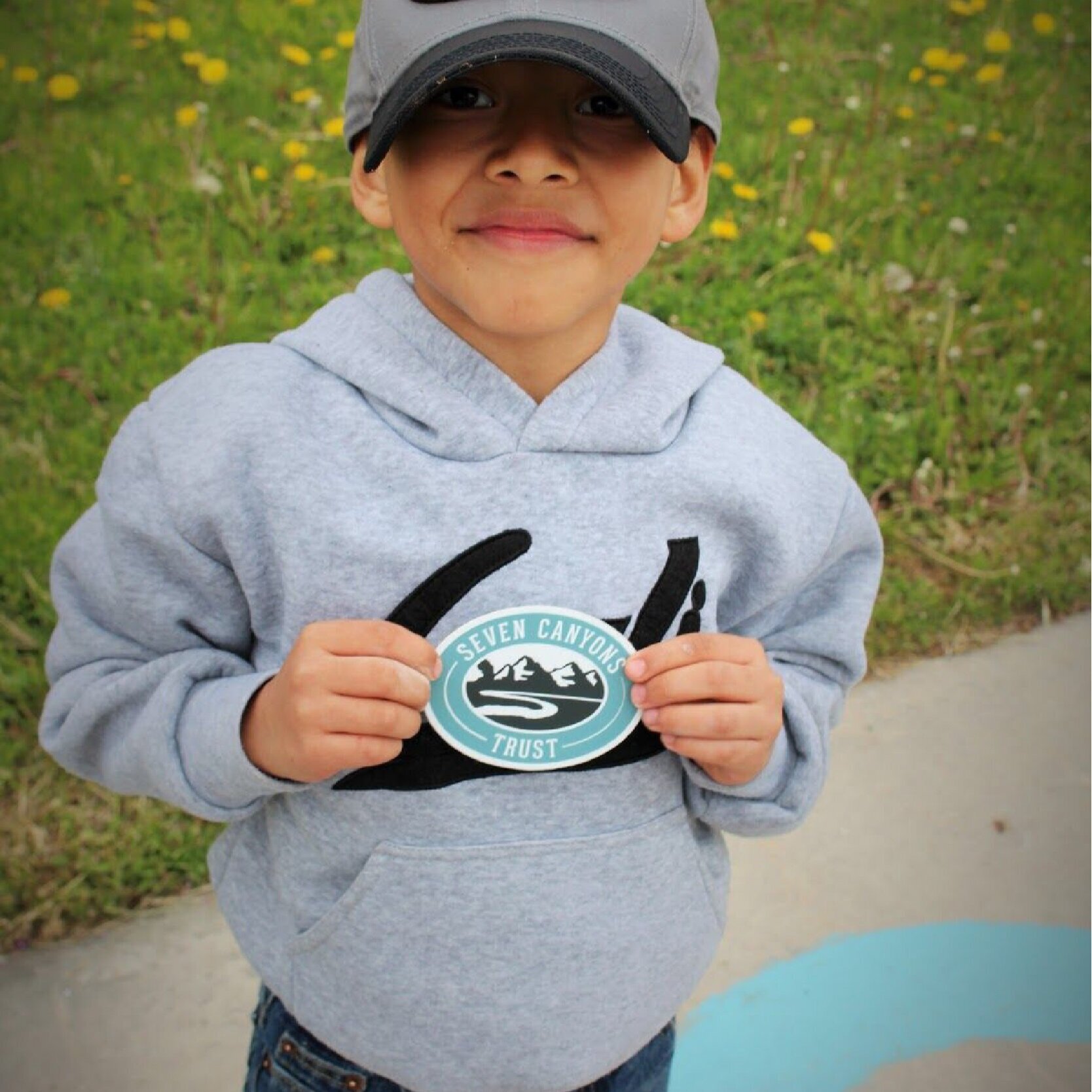A Creek Walk with the Seven Canyons Trust: Photographic Essay
Authored by Shaela Adams, Mila Jaskowski, Meagan Nielsen, & Nick Sorge
A creek walk along Red Butte, Emigration, and Parleys creeks with local students, exploring the Three Creeks Confluence in the Glendale neighborhood. Students learned about Salt Lake City’s underground waterways, removed noxious weeds, and chalked a message above the underground creeks. Fish are here.
Underneath the streets of Salt Lake City run the rivers of the Wasatch Mountains: Red Butte, City Creek, Parleys Creek, Emigration, Mill Creek, Little Cottonwood Creek and Big Cottonwood Creek. During the turn of the 20th century, the creeks were culverted within the city, existing underneath us ever since.
Dedicated to daylighting the creeks of the Wasatch Front, the Seven Canyons Trust has developed a 100-year plan to bring all of these creeks back to the surface, reestablishing their natural ecosystems. The organization focuses on the ecological benefits, as well as the community benefits.
The Three Creeks Confluence, where the culverted Red Butte, Emigration, and Parley’s resurface into the Jordan River, is a central location in which daylight efforts are currently being focused. Efforts seek to engage the surrounding community, providing a location for socializing, recreation, and rehabilitation of natural ecosystems.
In quest to raise awareness and educate the Salt Lake Community, the Trust takes groups of community members on creek walks, through the Seven Creeks | Walk Series. Community members have the opportunity to learn about the effects of culverted creeks and the benefits of daylighting, as well as gain a better understanding of the significance of daylighting and the 100-year vision.
Local students had the opportunity to partake in the creek walk at the Three Creeks Confluence. The walk began on the sidewalk, in which the three creeks run beneath. Discussion, led by the students, took place about the concept of daylighting.
In the discussion, the students were taught about the various species that depend on the riparian ecosystems, such as neo-tropical migratory birds. They saw the important of the Jordan River for humans and nonhuman alike. The students watched a pair of Mallard ducks, resting on the culvert containing the three creeks, and inventoried the vegetation on-site.
The students learned about invasive species. They counted the rings of a tree cookie from a Russian olive, an invasive species prevalent along Utah’s waterways. Afterwards, the rings of a native Fremont cottonwood were counted. The students noticed these rings were much less spaced apart, evidence of a slower growing species when compared to Russian olive.
The students then had the chance to actually remove invasive species at the site. Invasive Scotch thistle was the target. Teamwork was required. Indirectly, they learned it is easier to perform a task when working together. By engaging in hands-on activities, the students formed a deeper emotional connection to the health of the valley’s hydrology.
It doesn’t matter your size or age when keeping natural environments clean and healthy, a concept the creek walk actualized. The removal of invasive species allows natives to thrive, adding to the overall health of the ecosystem.
Along with the removal of invasives, the students learned about the importance of keeping waterways free of trash that degrade the ecosystem. Plastics can take thousands of years to biodegrade, remaining in the ecosystem if not removed.
The students returned to the sidewalk, illustrating the creeks flowing beneath. Here, they creatively expressed their feelings of excitement about the daylighting project via chalk. Showing off their artistic side, fish, ducks, and calls to action were drawn.
The students look forward to the possibility of a waterway returning in their neighborhood. They wish to be more involved in taking care of the environment, as well as raising awareness for the Three Creeks Confluence. The children are performing an interpretive dance symbolizing the return of the creeks to gain support from their family and friends.
A Creek Walk with the Seven Canyons Trust exemplifies the key aspects of community engagement within environmental justice. By engaging students face-to-face, injustices can be addressed, not only to the valley’s waterways, but also to the community members. After observing the consequences of culverting creeks, participants developed a strong connection to the cause. The students quite literally skipped away with Seven Canyons Trust stickers, excited to perform a dance inspired by water. Connection inspires activism and action, even from the youngest of our community.

